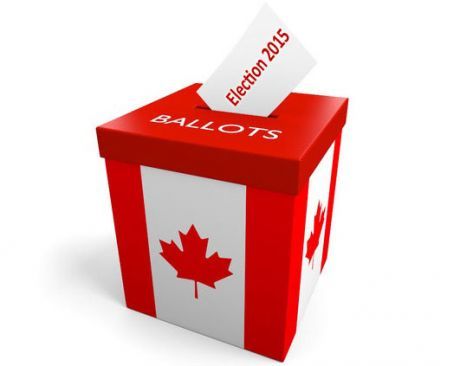Features
You are here
First Nations and the federal election

October 4, 2015
As a force for change, most people in so-called democracies like Canada look to political parties and elections as their most potent device. But this has not typically been the case for Indigenous peoples, long estranged from the state that oppresses them.
Indigenous sovereignty and elections
Many indigenous people have not participated in voting for the same reason as other groups that have been impoverished and marginalized, i.e. they do not see any politicians who represent their interests. Changes made to voting procedures made by the Tories in 2014 (with the Orwellian name The Fair Elections Act) make it even more difficult for people from these groups to vote, with stricter requirements for identification, for example.
But Indigenous people also have anti-colonial reasons for not participating in elections.
Many Haudenosaunee people, for example, look to the Two Row Wampum, and see participation in “mainstream” elections as undermining treaty rights. It was only in 1960 that the Canadian state allowed Indigenous people to vote, and a few years later Canada tried to forcibly assimilate First Nations through the White Paper. As Red Power activist Howard Adams wrote, “All governments regardless of their political affiliations have discriminated against native people and denied them their rights as full citizens. Parliament is an instrument of the ruling class and its main purpose is to support and protect the ruling class…The ballot box is a fraud that tricks us into believing that the next election can relieve us of our oppression.”
A generation later, Idle No More has sparked a new wave of extra-Parliamentary struggle for Indigenous soveriengty. As Mi’kmaw lawyer Pamela Palmater wrote at the start of the election campaign, “I choose not to vote and do not believe that we should rest our hope on a federal election any more than we should an Assembly of First Nations (AFN) election. The whole point of sovereignty is that Indigenous nations must assert, live, and defend our sovereignty, jurisdiction, and right of self-determination—not vote for federal politicians to do that for us.”
At the same time there appears to be an increase in the level of participation in Parliamentary elections. There are 53 Indigenous candidates in the 388 ridings: 22 running for the NDP; 18 for the Liberals; 8 for the Greens; 4 for the Conservatives; and 1 for the Libertarian party; these numbers do not include additional Indigenous individuals who did not win nomination contests. The Assembly of First Nations is working with Elections Canada to work through some of the barriers created by the 2014 legislation, and has issued the report Closing the Gap: 2015 Federal Election Priorities for First Nations and Canada.
The election and beyond
The Tory record is abysmal, as is their “platform”, which says nothing about the Truth and Reconciliation Commission or missing and murdered Indigenous women. The Liberals, NDP and Greens all promise a national inquiry on missing and murdered Indigenous women, with the Liberals and Greens calling for restoration of the Kelowna funding accord. The NDP has promised to repeal Bill C-51, whose criminalization of dissent will disproportionately target Indigenous people.
But none of the platforms adequately address the demands for environmental justice, which is at the heart of indigenous sovereignty. By either agreeing to pipelines (in precisely the territories where there is massive First Nations’ opposition), or by supporting tar sands if the oil is refined domestically, the parties are at odds with indigenous self-determination.
Similar to before the election campaigning, and regardless of which party wins, Indigenous peoples and their allies will be using direct action, the courts, negotiations, and mass mobilizations to press for environmental justice, justice for Indigenous women, respect for territories and an end to racism.
Section:










